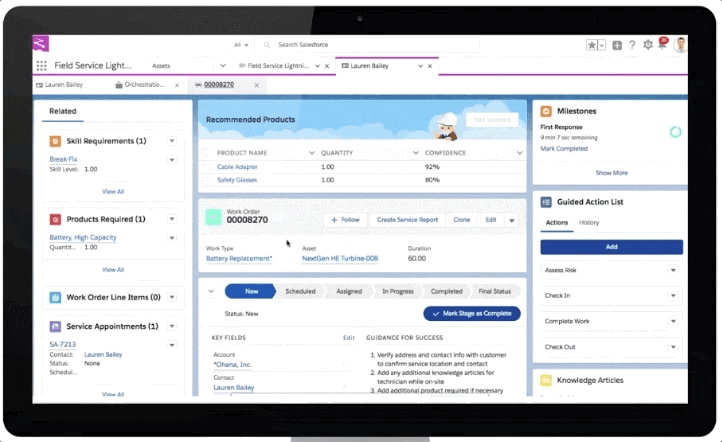
Get your FREE 30-day trial.
Please complete all fields.

IoT-enabled products give organizations an opportunity to take a proactive approach to customer service, and the potential is limitless. Examples include smart homes that notify service teams when an oven or air conditioning unit is about to fail, so they can fix the issue before the machine breaks; or industrial-scale machines that automatically send performance signals to field technicians in advance of routine maintenance. The promise is a world with zero down-time where everything just works.
But we’re not quite there yet, are we? Here’s why.
Gartner estimates that there will be more than 20 billion connected ‘things’ by 2020.1 This presents a massive opportunity for companies to provide valuable post-purchase services to customers, increase overall lifetime customer value, and ultimately help customers get more out of their products. However, 80 percent of businesses report that data silos exist within their organizations,2 which can keep important information — like device breakdowns or outages — from reaching the people on the front lines who could actually solve the problems. What good is a connected product if the signals it sends fall on deaf ears?
That’s why I’m so excited that Salesforce IoT Insights is now available as a Lightning Component within Field Service Lightning. With this solution, IoT signals show up directly within the Service Cloud and Field Service Lightning mobile app consoles alongside CRM data, giving companies the data they need to deliver personalized, predictive and proactive (excuse the alliteration) customer service.
Service organizations can now:
Anticipate and diagnose issues remotely — drawing on IoT signals surfaced in the Service Cloud console, agents can gauge whether device failure is imminent, quickly determine the source of the problem (often before the customer is even aware a problem exists) and dispatch the right mobile worker with the right skill set. And, by overlaying IoT with CRM data in the Service Cloud console and Field Service Lightning mobile app, both the customer service agent at HQ and the mobile worker in the field have a holistic view of the customers’ service history so they can deliver more personalized service. No more asking, “Has this happened before?”
Empower workers with the information they need — mobile workers can now learn about what requires servicing or fixing before arriving at the site, ensuring that they show up prepared with the right equipment and knowledge. This helps workers avoid having to shuttle back and forth from the warehouse to pick up a forgotten tool or part. And, with the mobile app, technicians are armed with everything they need — device data, customer data, and the right documentation — to fix the machine onsite and ensure it has been repaired properly before they leave.
Automate case and work order creation — leveraging rules, automation and guided processes, companies can now take advantage of orchestration capabilities combined with IoT signals to automatically trigger the creation of cases and work orders. For example, businesses can set rules to automatically trigger the creation of a case and deploy a field agent the moment a device begins malfunctioning. This empowers teams to focus less on administrative work and more on higher value projects, such as actually solving the root of the customer’s problem.
Customers are already taking advantage of Salesforce IoT in Field Service Lightning. One of my favorites is Samson Rope, a 140 year old company that creates rope for a variety of global industries and uses including arbor, vessel mooring, mining, fishing and safety/rescue.
“At Samson Rope we have over 8,000 lines of rope in use that each last around 8-10 years, and we service them throughout the life of the product,” said Dean Haverstraw, Director of IT, Samson Rope. “These post-purchase services are a large part of our business, and we chose Field Service Lightning to manage all of those lines, and provide customers with tools to monitor rope health, manage compliance requirements and more. We’re now piloting high-tech rope threading that — when connected to Field Service Lightning via Salesforce IoT — will help customers monitor rope conditions and know when it needs to be replaced.”
This is just one of the many ways our customers are fundamentally transforming service through innovation and data. I’m excited to see what 2019 will bring.
You can learn more about Field Service Lightning here and Salesforce IoT Insights here. Here are training resources to get started with Field Service Lightning on Trailhead.
Salesforce IOT Insights is available as part of the Salesforce IoT Explorer and IoT Explorer Plus licenses.
1 Gartner, “Hype Cycle for the Connected Home 2018,” 30 July 2018
2 Dun & Bradstreet, “Are Data Silos Killing your Business,” May 7, 2018, Michael Goldberg